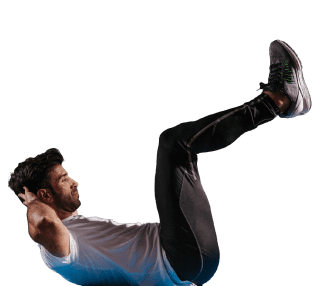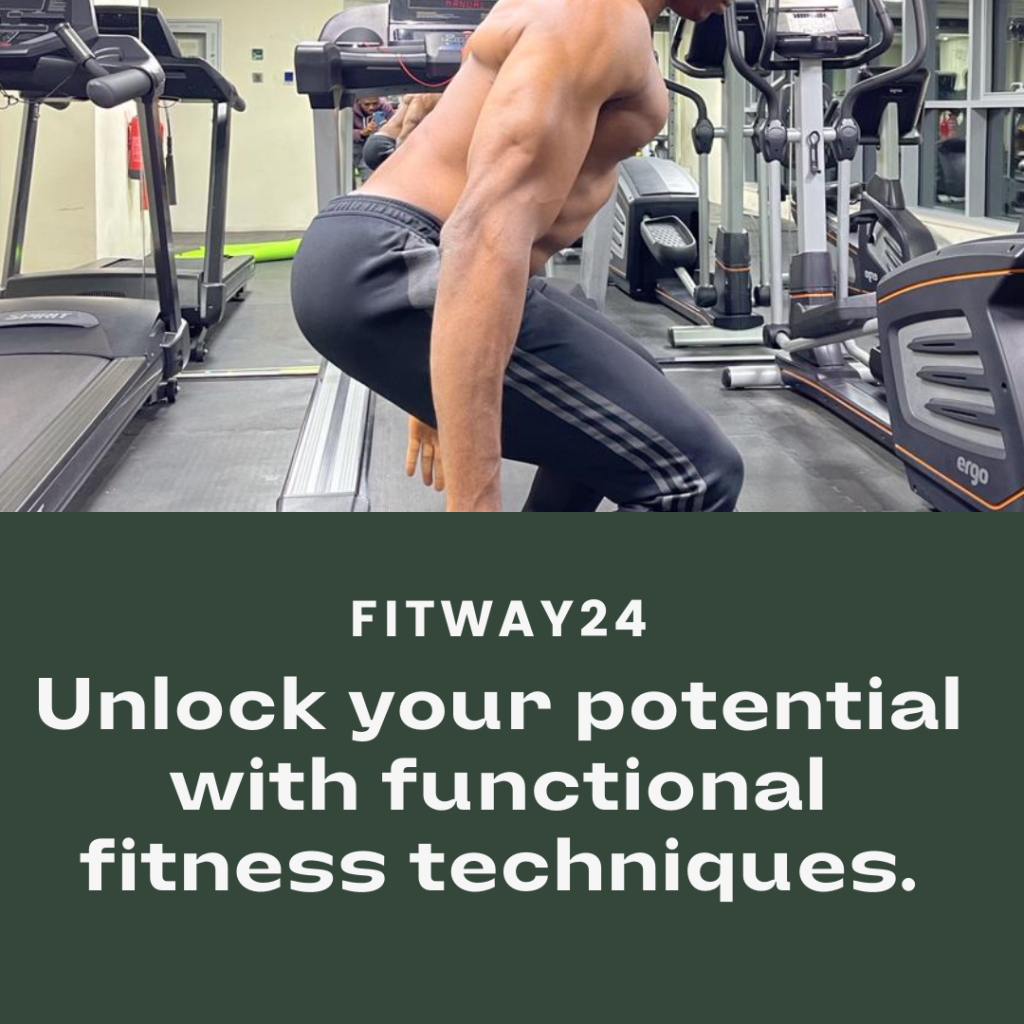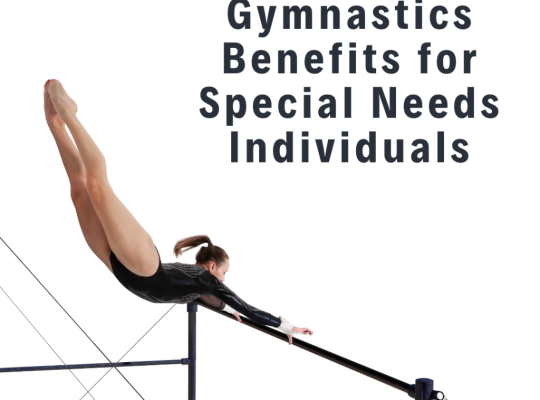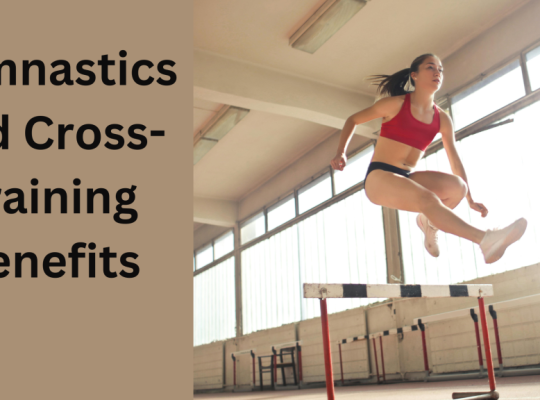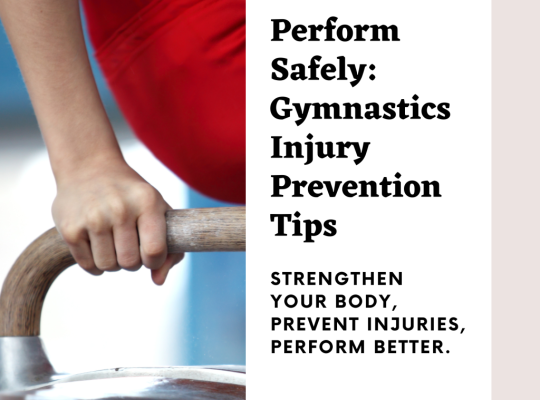Introduction
In today’s fast-paced society, staying in physical shape is essential for a healthy and fulfilling life. While traditional workout regimens concentrate on muscle groups, functional fitness takes a holistic approach by focusing on movements that mirror everyday activities. This detailed guide will explore the realm of training, covering its advantages, exercises, gear, and programs for people of all fitness levels.
What Does Functional Fitness Entail?
Functional fitness, also known as training, is a form of exercise that teaches your muscles to cooperate and primes them for responsibilities by replicating common movements you might perform at home or during sports. In contrast to weight training, which isolates muscle groups, functional fitness workouts engage multiple muscle groups simultaneously to enhance overall strength, flexibility, balance, and coordination.
The fundamental principle behind fitness is to prepare your body for real-life motions to make daily tasks easier and decrease the likelihood of injuries. Whether you’re an athlete seeking performance enhancement, a senior aiming to sustain independence, or just someone looking for a rounded fitness regimen, functional training can be advantageous.
Benefits of Functional Fitness
Enhanced Functional Movement: Functional workouts replicate bending, pushing, pulling, and twisting. Practicing these movements can boost your capability to carry out tasks effortlessly and lower your chances of getting hurt.
Boosted Core Strength: Functional training focuses on activating your core muscles to maintain posture, stability, and balance. A strong core can also alleviate back discomfort. Enhance athletic performance.
Improved Stability and Coordination: Many functional exercises test your stability and coordination skills, training your body to respond to positions and motions. This enhanced stability and coordination can result in agility and a decreased risk of falls.
Comprehensive Body Conditioning: Unlike weightlifting, which isolates muscle groups, functional fitness routines engage multiple muscle groups simultaneously for a holistic workout. This well-rounded approach leads to enhanced strength and stamina.
Injury Prevention: Functional training aids in injury prevention by replicating real-life movements while emphasizing technique. It also strengthens the muscles and joints involved in activities.
Adaptability: Functional fitness can be customized to cater to fitness levels, objectives, and equipment availability, making it a flexible and inclusive approach suitable for individuals of all ages and capabilities.
Functional Fitness Exercises
Exercises in fitness routines usually include a mix of movements that engage muscle groups and motion patterns. Below are some exercises you can integrate into your workout regimen:
Functional fitness routines typically include exercises that work muscle groups and movement patterns. Here are some popular functional exercises you can add to your workout;
Compound Exercises
Squats (using body weight, a kettlebell or a barbell)
Lunges (backward or sideways)
Push-ups (regular, inclined or declined)
Pull-ups or Lat Pulldowns
Deadlifts ( Romanian style)
Balance Exercises
Single leg Deadlifts
Single leg Squats
Walking Lunges
Different Plank variations
Core-strengthening exercises
Planks
Russian Twists
Bicycle Crunches
Pallof Presses
Plyometric Exercises
Box Jumps
Squat Jumps
Burpees
Jumping Lunges
Functional Movement Exercises
Push press
Kettlebell Swings
Medicine Ball Slams
Woodchoppers
By combining these exercises in different ways, you can create a comprehensive functional fitness routine that simultaneously targets multiple muscle groups and movement patterns.
Functional Fitness Equipment
While you can do functional fitness workouts with your body weight, using equipment can add variety and challenge to your routine. Here are some standard pieces of equipment used in training;
Resistance Bands: These versatile and portable bands are suitable for strength training, mobility exercises, and rehabilitation work.
Kettlebells: These weights shaped like cannonballs with handles are great for workouts such as swings, cleans, and snatches. They work for muscle groups and help improve grip strength.
Medicine balls: these weighted balls can be used for functional exercises like slams, twists, and throws. They aid in enhancing power core strength and coordination.
Stability balls, also called balls, are useful for strengthening the core muscles through exercises that focus on balance training and rehabilitation.
Battle Ropes: Battle ropes offer a rigorous full-body workout by mimicking movements such as climbing, undulating waves, and slamming the ropes on the ground.
TRX Suspension Trainers: TRX Suspension Trainers are suspension systems that leverage your body weight and gravity to challenge your strength, balance, and stability through various exercises.
Plyo Boxes: Plyo boxes are platforms for workouts such as box jumps, step-ups, and lateral jumps. They help enhance power and explosiveness.
While specialized equipment can elevate your fitness routine significantly, Many exercises can still be done without equipment at all, making functional training accessible to everyone.
Functional Fitness Programs
Related article: Unlock Your Full Potential: 20 Essential Stretches for Improved Flexibility
Functional fitness programs aim to incorporate exercises targeting muscle groups and movement patterns, providing a well-rounded and practical workout experience. These programs can be customized to accommodate fitness levels, objectives, and equipment availability.
High-Intensity Functional Training (HIFT): HIFT programs merge movements with high-intensity interval training, alternating between exertion and rest or active recovery periods. These workouts are crafted to challenge endurance, strength, and power.
Functional Strength Training: Programs focusing on functional strength training emphasize enhancing strength and muscle endurance through compound exercises that simulate real-life movements. These routines often include resistance training using weights, resistance bands, or bodyweight exercises.
Functional Mobility and Balance Training: Programs prioritize flexibility, range of motion, stability, mobility, and balance and consist of exercises that aim to improve these aspects. They are particularly beneficial for seniors, athletes, or individuals recovering from injuries by helping prevent falls and enhancing movement functionality.
Functional Fitness for Beginners: For those who practice fitness, it is advised to start with a beginner-friendly program. These programs introduce movements that gradually increase intensity while building strength and confidence.
Sport-Specific Functional Training Athletes can benefit from sport-specific functional training programs tailored to the demands of their respective sports. These programs are designed to boost performance and reduce injury risks. Enhance the movements crucial for their athletic activities.
Whether you opt for guidance from a certified fitness trainer or follow a program, staying consistent and maintaining form are critical to getting the most out of your training sessions.
Incorporating Functional Fitness into Your Routine
Functional fitness can easily be incorporated into your current exercise routine. Form the basis of a comprehensive fitness plan. Here are some suggestions for adding training to your life;
Start with a functional fitness assessment: Before starting a fitness program, consider getting an assessment to pinpoint your strengths, weaknesses, and potential limitations. This will help create a customized plan tailored to your needs and objectives.
Warm up properly: Functional exercises often entail compound movements that simultaneously engage muscle groups. Properly warming up with stretches and mobility exercises can prevent injuries and prepare your body for the upcoming workout.
Focus on proper form: Correct form is vital in fitness to ensure you’re targeting the right muscle groups and movement patterns while minimizing injury risks. Working with a trainer to learn how to execute exercises properly might be beneficial.
Gradually increase intensity: Like with any workout regimen, it’s essential to start and steadily increase the intensity and complexity of your functional fitness sessions. This approach allows your body time to adjust and lowers the chances of overuse injuries.
Incorporate rest and recovery: Given that functional fitness and workouts can be intense, it is crucial to allow time for rest and recovery between sessions.
To avoid getting exhausted, lower the chances of getting hurt, and ensure you’re giving your effort in every workout session,.
Cross-train with other activities: While focusing on fitness is critical, adding activities like yoga, Pilates, or gentle cardio can enhance overall fitness levels, flexibility, and stability.
Seek guidance if needed: If you’re new to fitness or have goals or limitations, consider starting with a certified functional fitness instructor. They can offer advice, make sure your form is correct, and create a customized program for you.
Conclusion
Functional fitness involves working out to prepare your body for movements and tasks. By integrating training into your exercise regimen, you can enhance your overall strength, stamina, and flexibility and your ability to carry out daily activities effortlessly while minimizing the risk of getting hurt.
Whether you’re an athlete striving to boost performance, an older adult aiming to retain independence, or simply someone interested in leading a functional life, fitness presents an efficient solution. From using your body weight for exercises to incorporating equipment, functional training can be customized to cater to fitness levels, objectives, and preferences.
Remember that consistency and proper technique play roles in maximizing fitness advantages. Begin at a pace focusing on executing movements, and gradually ramp up the intensity as you build confidence and strength. Moreover, seeking guidance from certified professionals can help ensure that you follow the path and reduce the risk of injuries.
Embrace the fitness journey as it unveils your potential for becoming a stronger, more capable individual with well-rounded abilities.
FAQS
Is functional fitness suitable for beginners? Definitely! Functional training can be adjusted to meet the needs of people at any fitness level, including beginners. Many functional training programs offer options that introduce movements and exercises gradually to help you improve your strength and confidence before moving on to more challenging routines.
Can functional training contribute to weight loss? Functional training can contribute to weight loss efforts. The intense, full-body workouts involved in training can burn a significant amount of calories while also helping build lean muscle mass, which can enhance metabolism and support fat loss.
Are training exercises for individuals with injuries or limitations? Functional training exercises can often be adapted for individuals with injuries or limitations. However, seeking guidance from a qualified healthcare-certified fitness trainer is crucial to ensure the exercises are tailored to your specific needs and capabilities to prevent any potential aggravation of existing conditions.
What are some recommended pieces of equipment for home-based functional fitness workouts? Some top choices for home-based fitness equipment include resistance bands, kettlebells, medicine balls, stability balls, and adjustable dumbbells or sandbags. These adaptable tools offer a range of exercises that don’t require space or a big financial commitment.
Can functional fitness improve sports performance? Yes, functional fitness training can enhance sports performance by simulating the movements and requirements of sports. Both professional and amateur athletes use training to boost their strength, power, agility, and injury resistance, improving performance in their respective fields.
The article answers questions and gives readers insights and explanations about functional fitness, helping them grasp and adopt this holistic approach to exercise and health.



